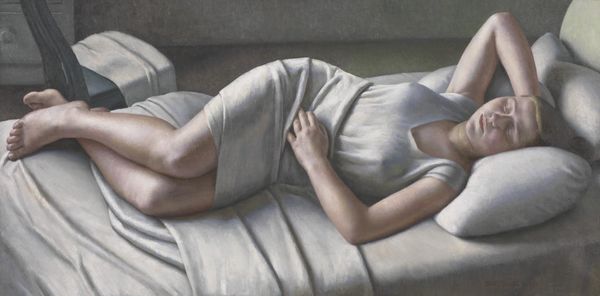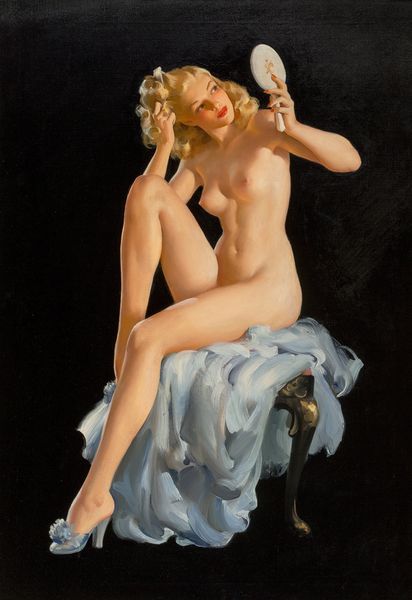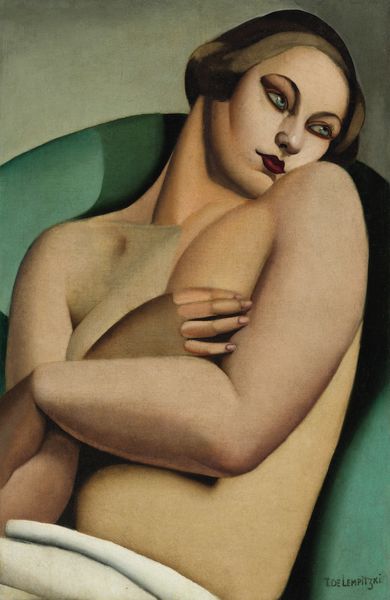
painting, oil-paint
#
portrait
#
art-deco
#
painting
#
oil-paint
#
nude
#
portrait art
#
modernism
Copyright: Tamara de Lempicka Estate LLC
Editor: Here we have Tamara de Lempicka’s “Sleeping Woman (Kizette),” painted in 1935. It’s oil on canvas, and the smooth, almost porcelain-like skin gives the subject an ethereal, untouchable quality. How do you interpret this work in the context of her broader artistic themes? Curator: I see Lempicka using the female form as a powerful vehicle for exploring themes of autonomy and desire during a period of immense social change. Note the hard shadows and sharp lines typical of Art Deco: how do they contribute to a sense of strength rather than vulnerability in the figure? Editor: That's a really interesting point; I hadn’t thought about how the style itself impacts the reading of the subject. It almost feels like a reclaiming of the traditionally passive female nude. Curator: Precisely. And consider Lempicka's own identity as a queer woman navigating a predominantly patriarchal art world. How might that influence her representation of female intimacy and sexuality? What could this "sleeping" state suggest in the turbulent interwar period? Editor: Perhaps the “sleeping” is actually resistance, a withdrawal from societal expectations? It adds layers to how one views female agency, not necessarily through active revolt but quiet, internal assertion. Curator: Exactly. This painting becomes more than just a pretty picture; it is a coded text that challenges conventional gender roles through a modern lens. Seeing "Sleeping Woman" as part of an early 20th-century discussion of the evolving feminine ideal deepens my understanding and appreciation of the piece. Editor: I definitely agree. It makes me see beyond the surface beauty and recognize the social commentary woven within the artwork. Thanks so much.
Comments
No comments
Be the first to comment and join the conversation on the ultimate creative platform.













